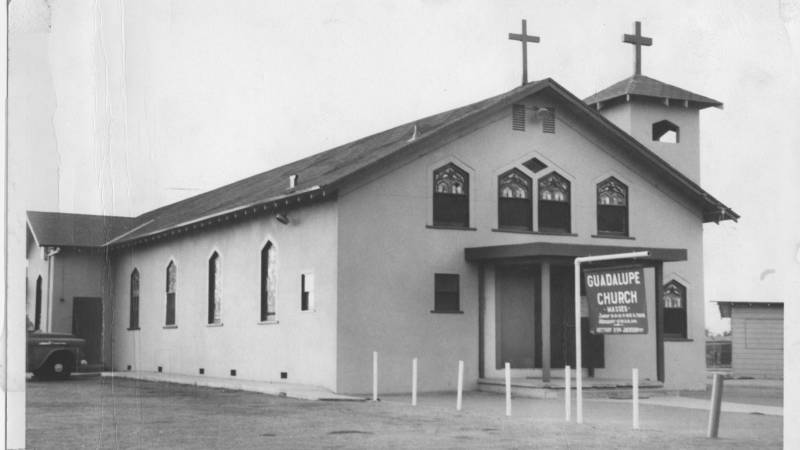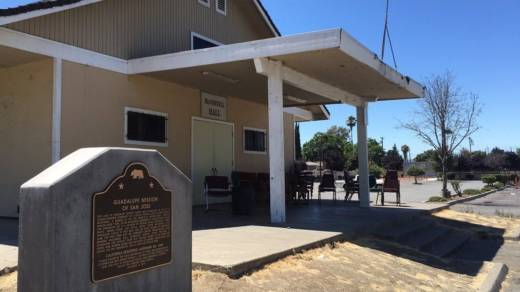Chávez later said his education began with the parish priest, according to Marc Grossman, who knew the civil rights icon for the last 24 years of his life and still serves as communications director for the Cesar Chavez Foundation. Chávez was in his early 20s when he met Father McDonnell, but the young man had only an eighth grade education at the time. Father McDonnell introduced to social justice literature in the Catholic Church as well as secular authors like Tolstoy and Machiavelli.
Grossman says the priest “did, in a very quiet way, change the world.”
Later renamed McDonnell Hall, the modest chapel became a center for grassroots activism on several social fronts and a training ground for community leaders like Chávez. It was at the mission that he and others got involved with the Community Service Organization in the 1950s and ’60s as it conducted voter registration drives, civil rights lawsuits and legislative campaigns, as well as citizenship and literacy classes.
Chávez would later apply what he learned in San Jose alongside Dolores Huerta to launch the United Farm Workers Union and organize the famous grape boycott that launched him to national prominence as a civil rights leader and advocate of nonviolent protest.
In the application for national historic status, El Teatro Campesino founder Luis Valdez (whose family members were parishioners at the mission in the 1950s), is quoted as saying McDonnell Hall not only still resonates as a symbol of the farmworker movement, but also serves as a broader symbol of an “ongoing struggle in the heart of humanity” for “social justice.”
Watch a KQED Newsroom feature on Chávez in San Jose
The national status for McDonnell Hall follows a successful bid for state status as a historic landmark a few years ago.
Congresswoman Zoe Lofgren (D-San Jose) applauded the federal designation in a press release. “I’m so proud of the communal effort that has led to such a great recognition for this simple chapel where one of our greatest civil rights champions began a movement that changed lives throughout our nation.”
Historic landmark status, bestowed on more than 2,500 spots nationwide, comes with federal grants for preservation, program assistance and free publicity in National Park Service tourist and educational materials. For instance, the properties are listed in the National Register of Historic Places.
Two other landmarks were designated in California:
• Chicano Park in San Diego, which locals occupied on Apr. 20, 1970 to prevent the construction of a California Highway Patrol substation on land the city had promised would become a neighborhood park. The park is now home to the Chicano Park Monumental Murals, an exceptional assemblage of master mural artwork painted on the freeway bridge supports.
• The Neutra Studio and Residences (VDL Research House) in Los Angeles is associated with Richard Neutra. During the 1940s, Neutra helped launch what we think of today as mid-century “California Modern” architecture.



